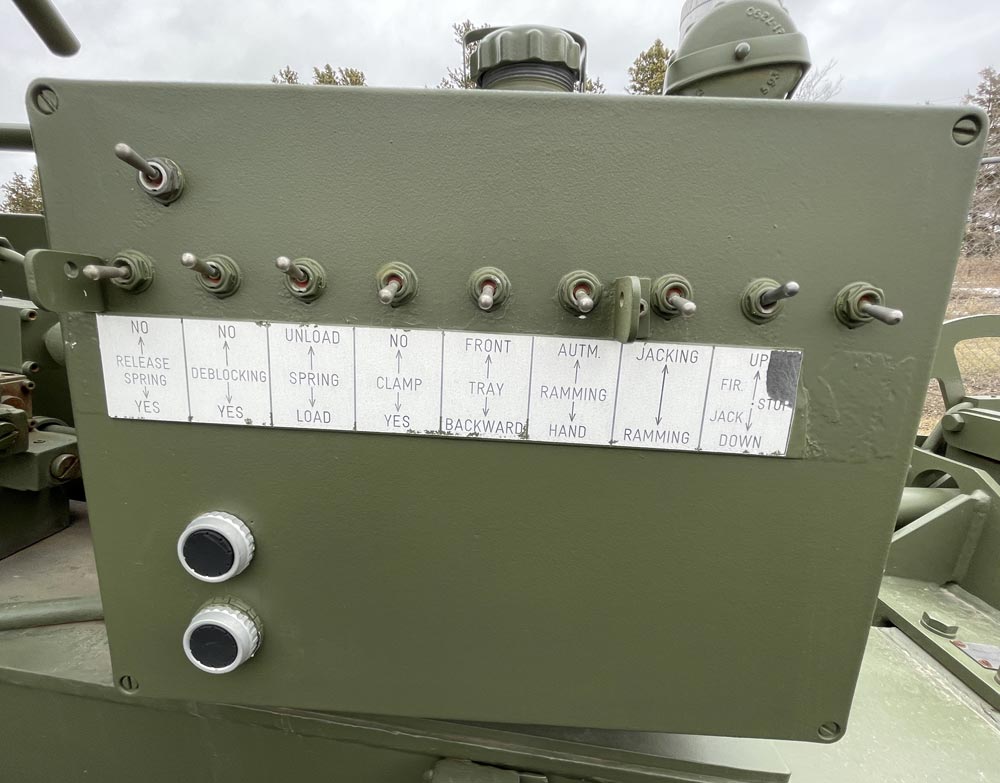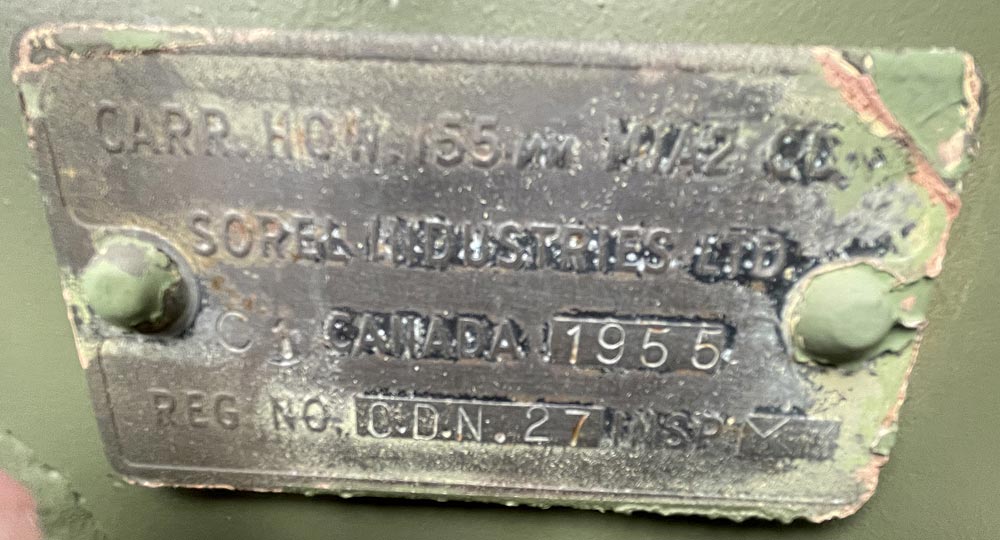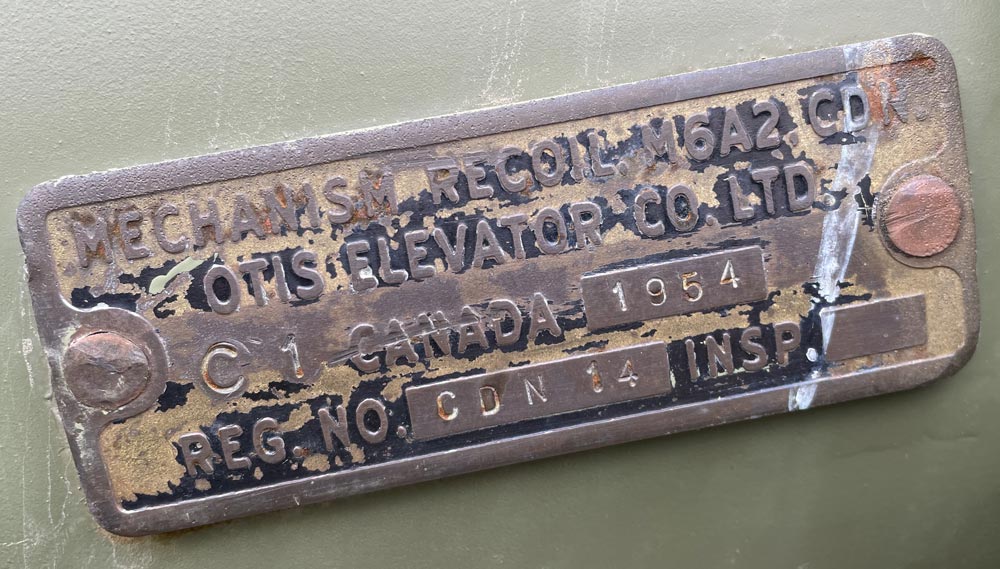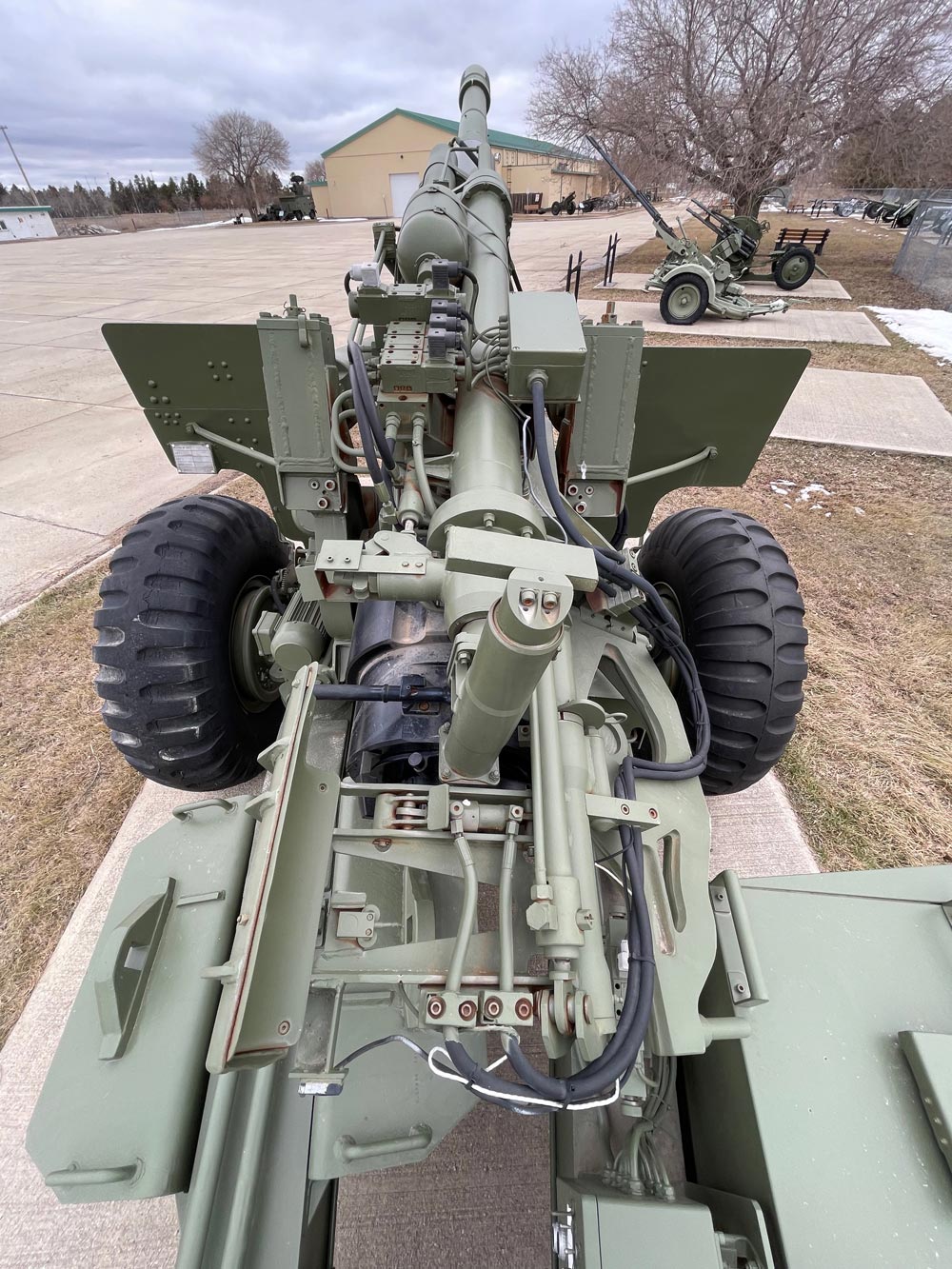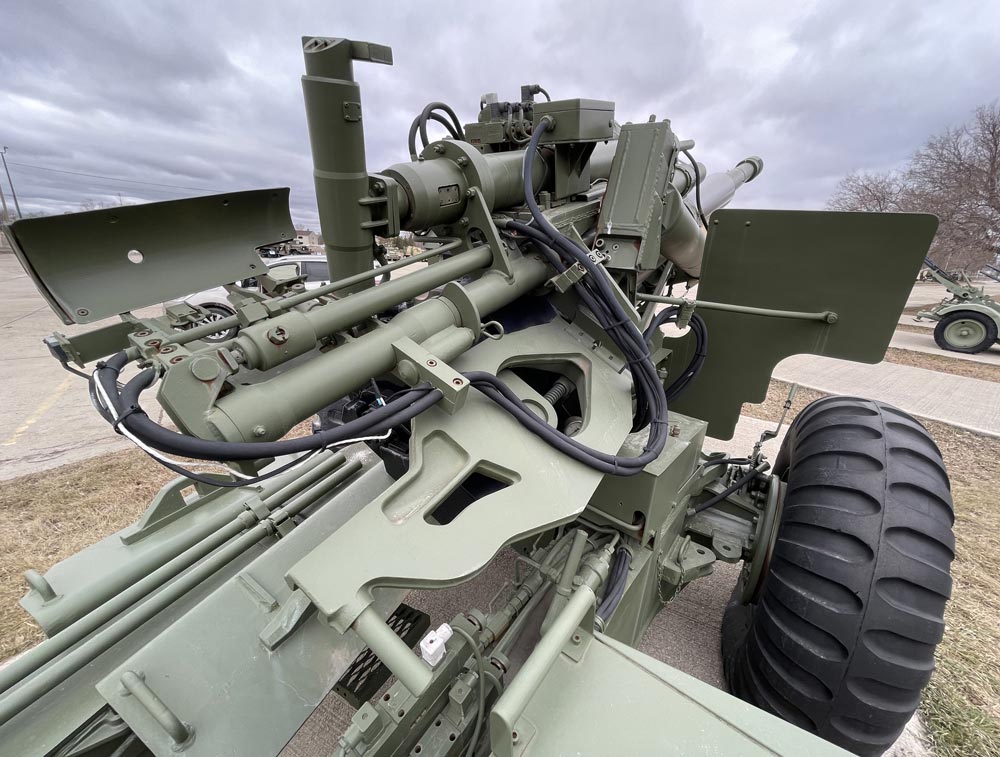
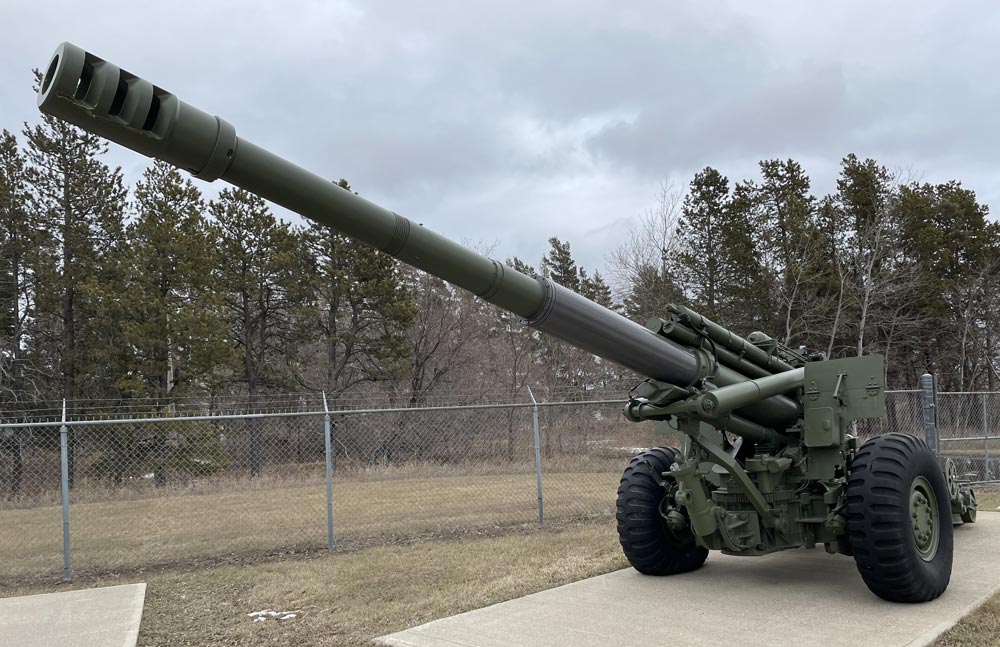
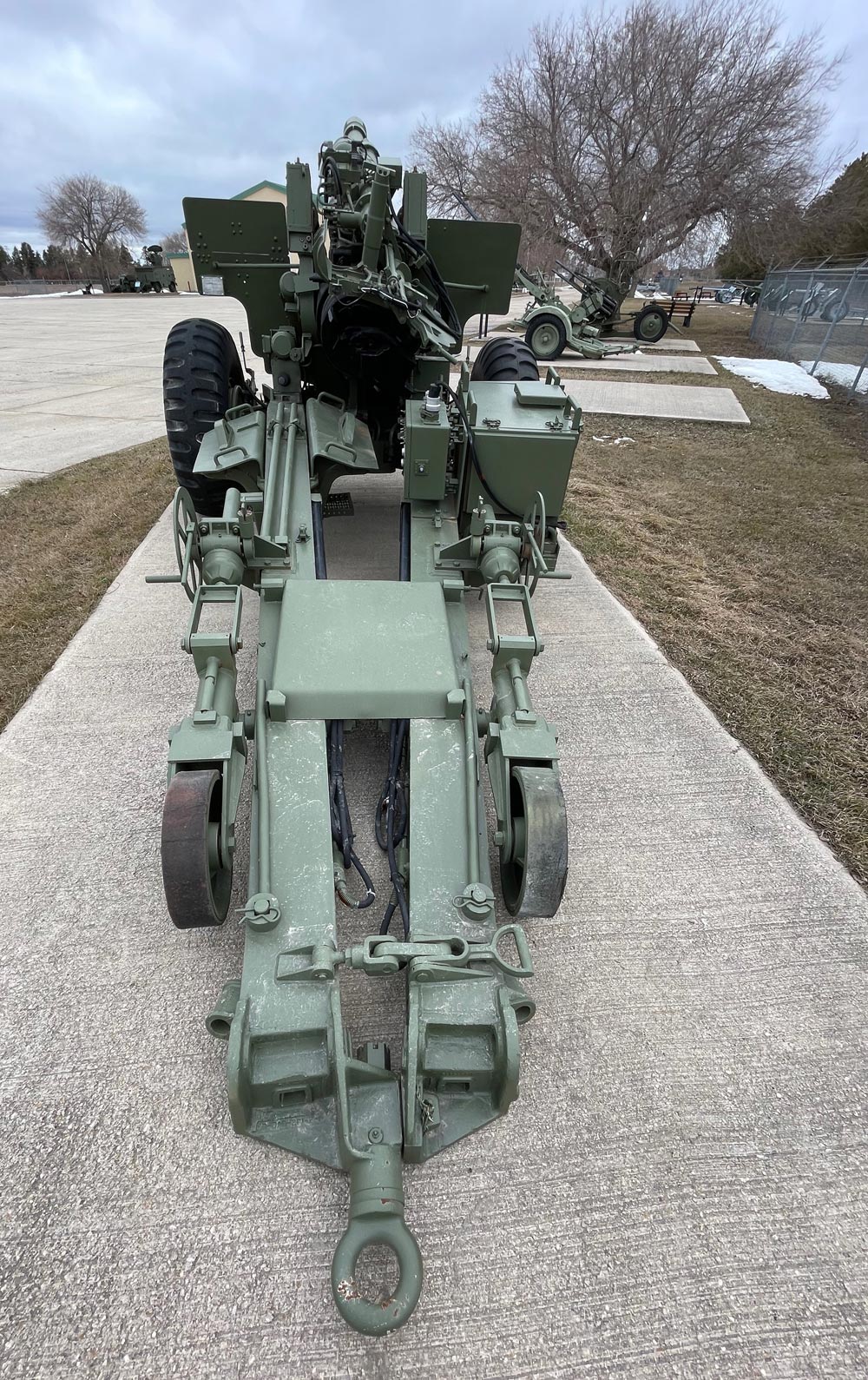
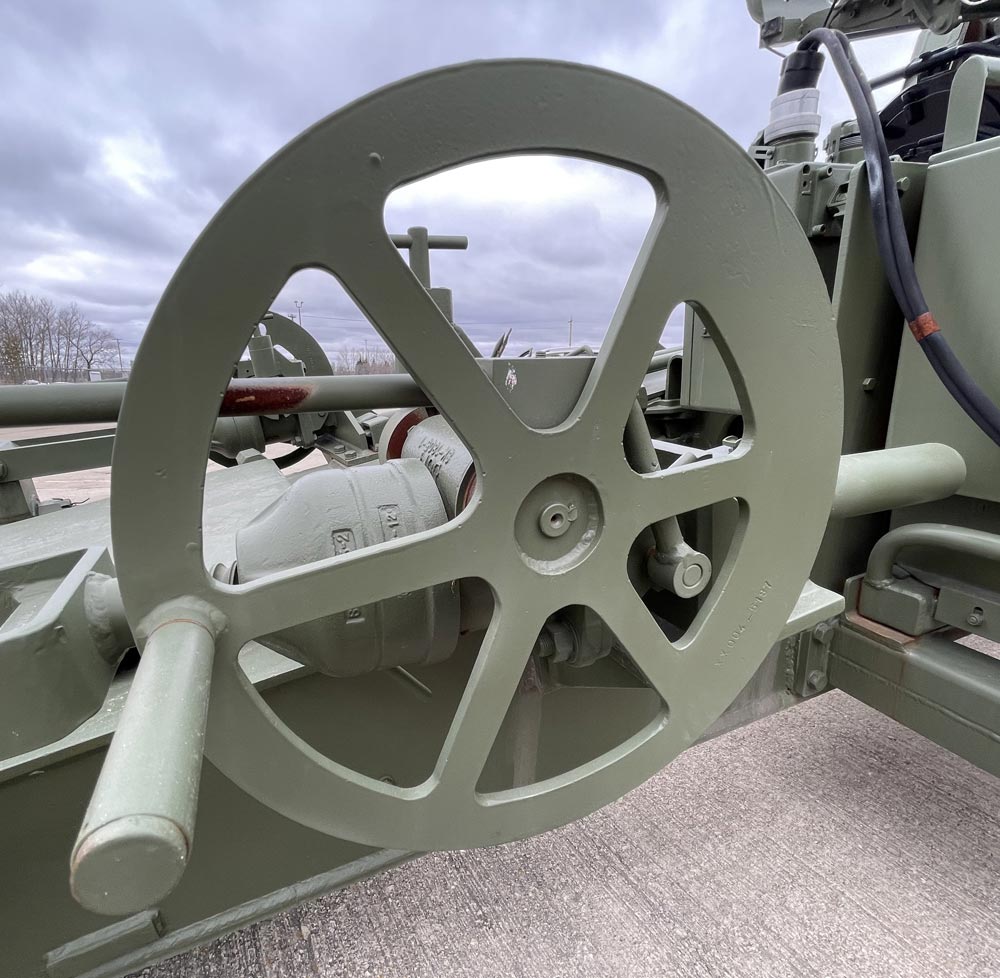
Andrew Oakden
Stag Special
RCA Museum staff recently moved its M114/39 howitzer to a new prominent location in the outdoor gun park.
Visitors now have an excellent view of the howitzer’s profile. We also call the M114/39 the Gerald Bull gun. Gifted Canadian engineer Gerald Bull developed long-range artillery making the M114/39 possible.
Later, he went to Iraq and designed a supergun for dictator Saddam Hussein. An unknown assailant assassinated Bull in March 1990.
In the 1980s, Bull introduced the “reverse rifling” concept and “extended range, full bore” (ERFB) ammunition. His new munitions included tail fins, which gripped the reverse rifling inside the barrel, as opposed to conventional bands which compressed into the rifling.
Bull experimented with M109 155 mm 45-calibre barrels, resulting in a significant increase in range, 50 to 100 per cent, with a low decrease in accuracy.
Bull proposed updating all the C1 155 mm howitzers (M114s) in Canada, but the Canadian Military proceeded cautiously. Canada approved the testing of two upgraded M114s.
RDM Technologies, a company from the Netherlands, converted two M114s into the M114/39 howitzers in 1988. The main upgrades included the 39-calibre barrel with a larger chamber and reverse rifling. The barrel calibre equals the length of the barrel divided by the barrel diameter. In this case, 15.5 cm/604.5 cm equals 39-calibre (20-foot barrel).
The old M114s used a 22-calibre or 11-foot barrel. RDM Technologies moved the carriage and jack forward to match a new centre of gravity due to the much heavier barrel.
Canada tested the two M114/39 howitzers with experimental ERFB ammunition in 1990. Gunners tried the howitzers at ranges from 25 to 32 kilometres, then at much greater distances.
However, the Canadian Armed Forces (CAF) cancelled the M114/39 project. The M114 was obsolete technology, and Bull was dead. It was the end of the Cold War, and Canada didn’t push for further military spending.
Moreover, the new long-range ammunition was expensive compared to conventional munition. The CAF was removing its fleet of five-tonne vehicles, and this new gun required one. In addition, the M114/39 required 11 strong Gunners to operate, which included lifting the 98-pound shell.
All these factors made moving forward with more M114/39 conversions unpractical. The CAF did incorporate reverse rifling and long-range ammunition technology in future barrel and munitions developments. In 1995, Canada retired the two guns, with one of those now on display at the RCA Museum’s outdoor gun park.
The M114/39, one of two retired in 1995, was moved to the RCA Museum’s outdoor gun park. Here are various views of the artillery piece by gifted Canadian engineer Gerald Bull, who developed long-range artillery making the M114/39 possible. Bull went to Iraq and designed a supergun for dictator Saddam Hussein. An unknown assailant assassinated Bull in March 1990. Photos Jules Xavier/Shilo Stag
